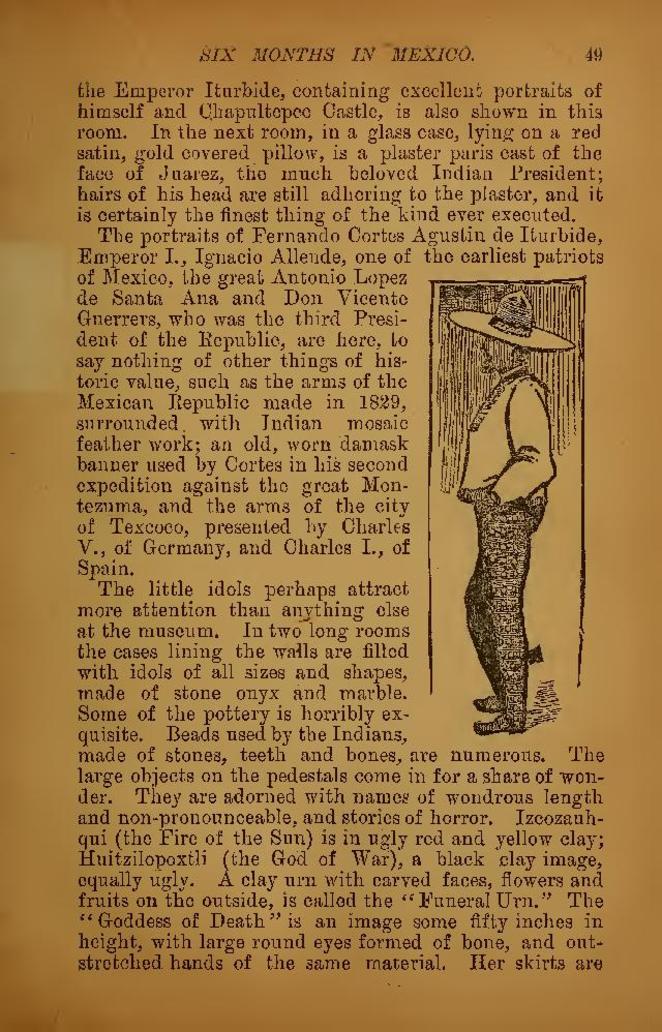Emperor Iturbide, containing excellent portraits of himself and Chapultepec Castle, is also shown in this room. In the next room, in a glass case, lying; on a red satin, gold covered pillow, is a plaster paris cast of the face of Juarez, the much beloved Indian President; hairs of his head are still adhering to the plaster, and it is certainly the finest thing of the kind ever executed.
The portraits of Fernando Cortes Agustin de Iturbide, Emperor I., Ignacio Allende, one of the earliest

patriots of Mexico, the great Antonio Lopez de Santa Ana and Don Vicente Guerrero, who was the third President of the Republic, are here, to say nothing of other things of historic value, such as the arms of the Mexican Republic made in 1829, surrounded with Indian mosaic feather work; an old, worn damask banner used by Cortes in his second expedition against the great Montezuma, and the arms of the city of Texcoco, presented by Charles V., of Germany, and Charles I., of Spain.
The little idols perhaps attract more attention than anything else at the museum. In two long rooms the cases lining the walls are filled with idols of all sizes and shapes, made of stone onyx and marble. Some of the pottery is horribly exquisite. Beads used by the Indians, made of stones, teeth and bones, are numerous. The large objects on the pedestals come in for a share of wonder. They are adorned with names of wondrous length and non-pronounceable, and stories of horror. Izcozauhqui (the Fire of the Sun) is in ugly red and yellow clay; Huitzilopoxtli (the God of War), a black clay image, equally ugly. A clay urn with carved faces, flowers and fruits on the outside, is called the "Funeral Urn." The "Goddess of Death" is an image some fifty inches in height, with large round eyes formed of bone, and outstretched hands of the same material. Her skirts are
